Tisha B’Av, the 9th day of Hebrew month of Av,
time to remember destruction of Jerusalem and pray for future.
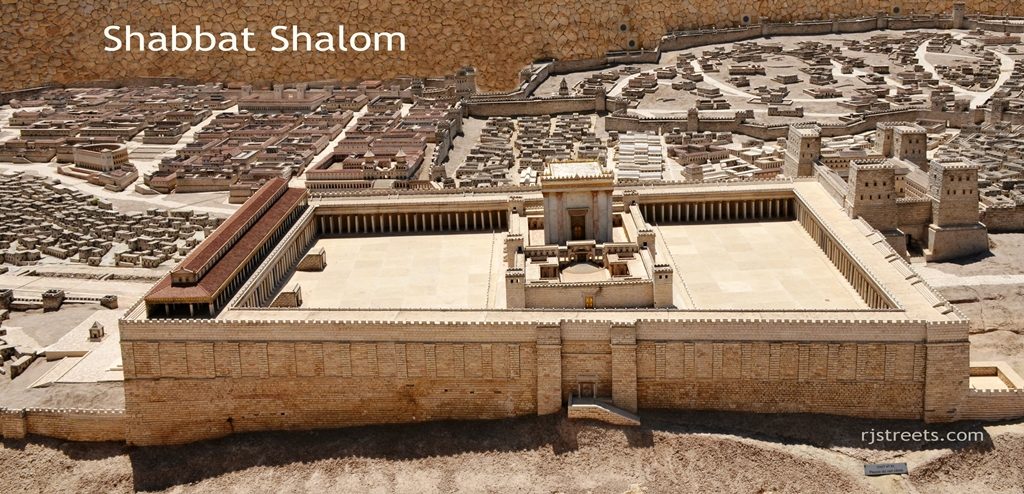
שבת שלום
Jerusalem, Israel – what is really happening
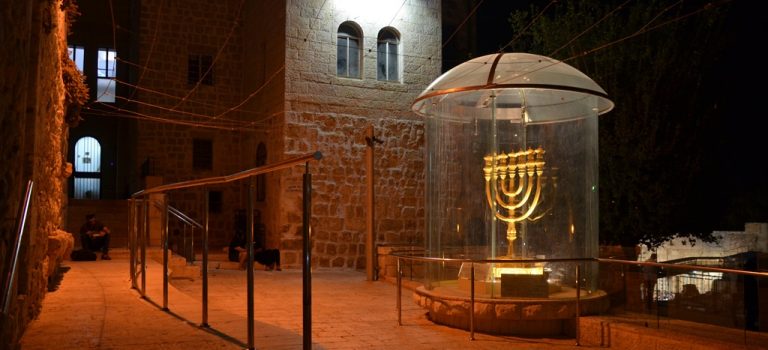
Tisha B’Av, the 9th day of Hebrew month of Av,
time to remember destruction of Jerusalem and pray for future.

שבת שלום

Rosh Chodesh Av starts the annual period of mourning in the Jewish calendar before the fast of Tisha b’Av, the 9th of the month of Av, which commemorates the destruction of both the First and Second Temples and other catastrophic events that befell the Jewish people.
With restrictions on live music, eating meat and drinking wine, there is a more somber mood this week in Jerusalem, Israel.
This year, however, the World Cup final provided and excuse for some to hold large gatherings to watch the game: at the Tower of David, street cafes and many outdoor venues.
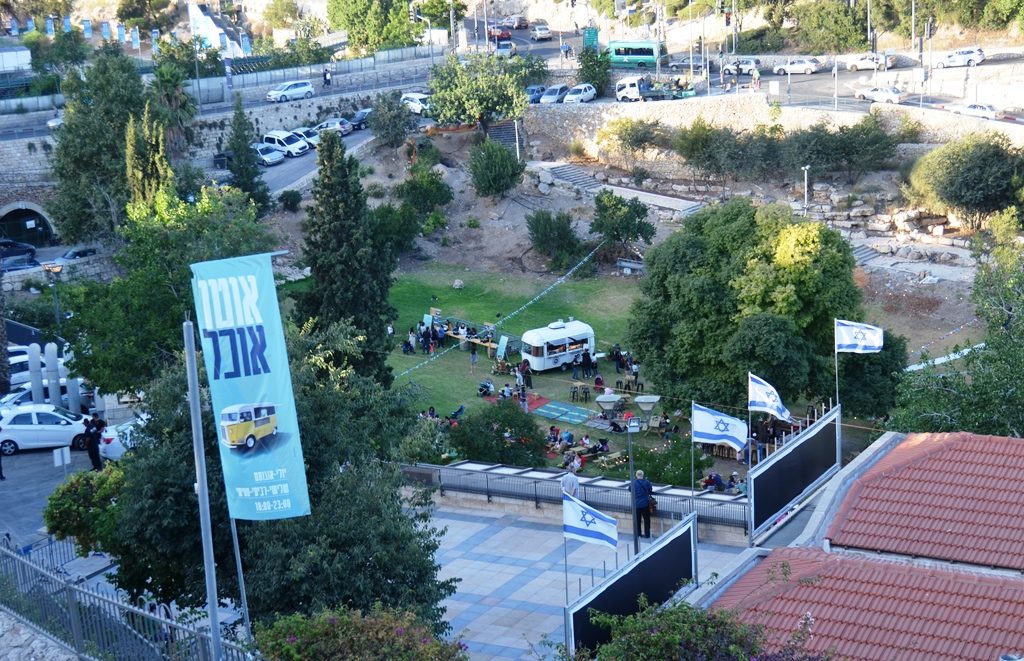
This summer there is something new called Auto Ochel, food trucks in Valley of Hinnom. The restaurants featured this week provided dairy meals for the Nine Days.
For this week, celebrations are limited, as for example, no Jewish weddings are held, in order to remember the destruction.

This model of the Second Temple stands outside at the Israel Museum.

Inside the museum a stone salvaged from its destruction in Jerusalem so many centuries ago is on display.
This time of year I remember the beautiful town of Yamit which was destroyed in 1981 in order to return every grain of sand in the Sinai peninsula back to Egypt as part of the peace treaty.

Thirteen years have passed since summer of destruction of Gush Katif. These beautiful homes were in one of the Israeli communities destroyed.
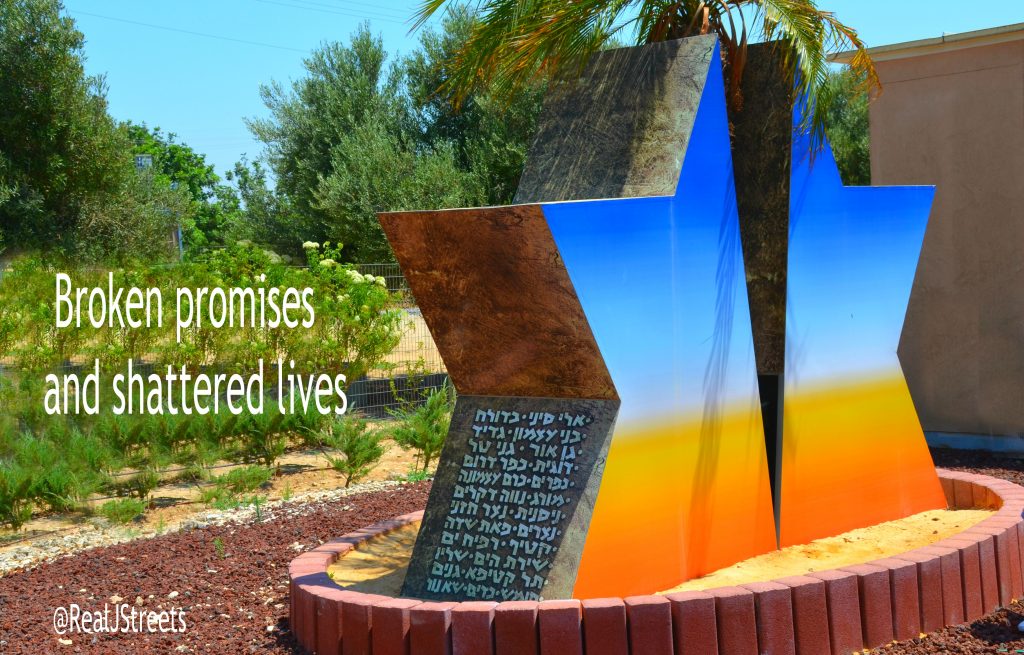
We are no closer to the promised peace.
Israeli fields have gone up in smoke over past three months. 7,400 acres were burnt.
Today two incendiary balloons from Gaza landed in a nursery school playground.

In this photo from Operation Pillar of Defense, November 2012, children in Sderot played inside the bomb-protected playground as missiles were launched at them from Gaza.
Who remembers the Truth about Gaza?
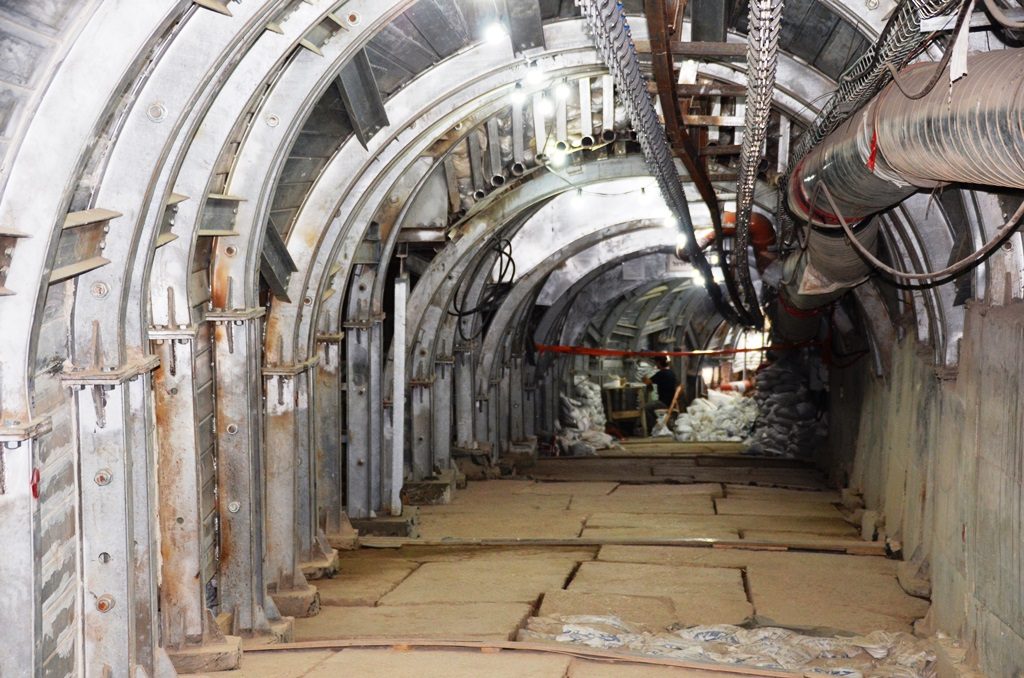
Thousands of pilgrims walked up these steps to the Holy Temples of old.
This week we remember the destruction in Jerusalem.
Ir David, City of David, is having a summer festival after Tisha B’Av, with camel rides and workshops.
The 35 th Jerusalem Film Festival begins next week, followed by the annual Wine Festival at the Israel Museum.
Next week we look forward to weddings, music and celebrations, and building new homes, with hope for the future.
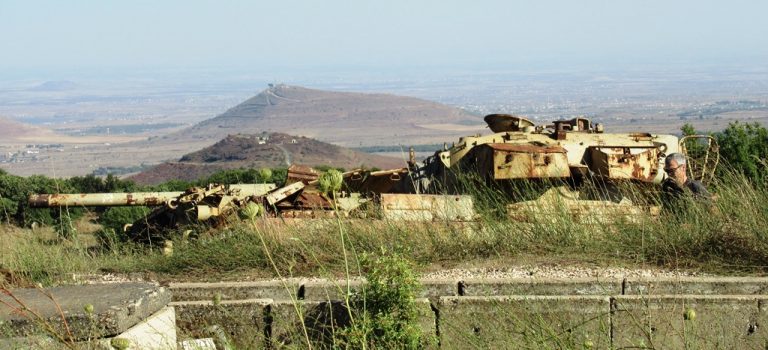
When you were young, what did your parents tell you when you didn’t want to eat all your dinner?
Parents around the world told their children to finish all the food on their plate, “because children were starving in China” or “hungry in Africa.”
In Syria, a mother told her young son, “If you do not finish your dinner, “Big Zionists will come and drink your blood.”
Imagine this young man’s surprise to find himself taken to Israel by the IDF for life-saving medical treatment, waking up in a hospital where the signs were in Arabic and the staff spoke his language.

One of the northern Israeli hospitals treating wounded Syrians is the Galilee Medical Center (GMC). It has taken over 1,500 of the 5-6,000 Syrians that Israel has treated.
What began with seven patients on February 16, 2013, has grown over the years. Word slowly traveled back over the border that if you want the best medical treatment, go to Israel.

Treating patients from Arab countries, Gaza, or Syria, is not new. A Syrian father who accompanied a son to Jerusalem for medical treatment, fell ill, and was treated in a hospital in Jerusalem in May of 2014. Here he is recuperating on a bed in the center of Jerusalem.
Then, as now, for their safety when they return to Syria, no names, no photos of faces are used to identity these patients. Having received life-saving treatment which is only available in Israel could be a death sentence for those patients when they return to Syria.
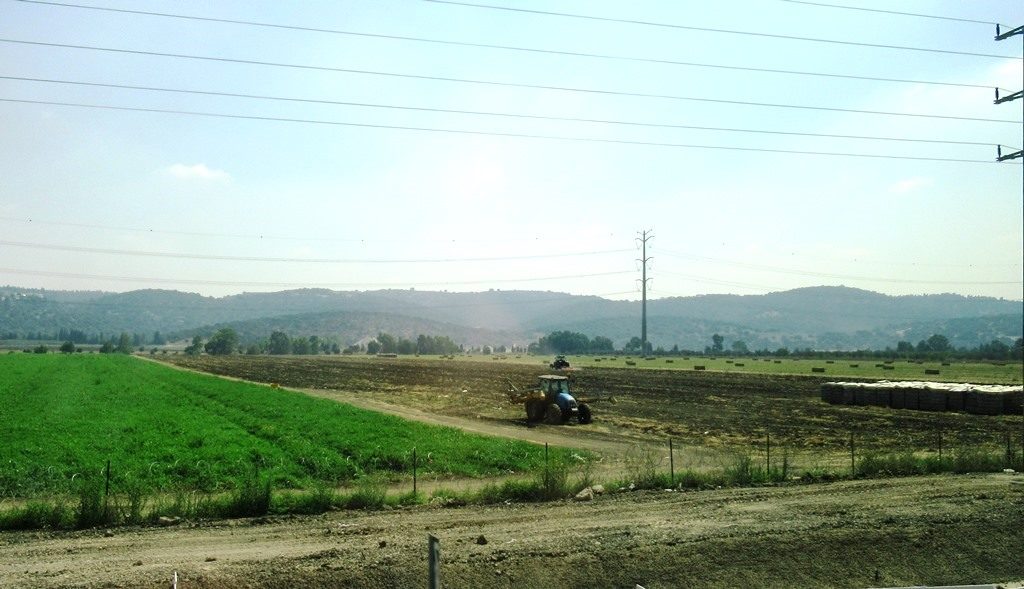
On a trip to the Golan from Jerusalem, Israel, one passes cultivated fields.

Rising apartment blocks for housing are seen, even on the outskirts of a municipal cemetery.
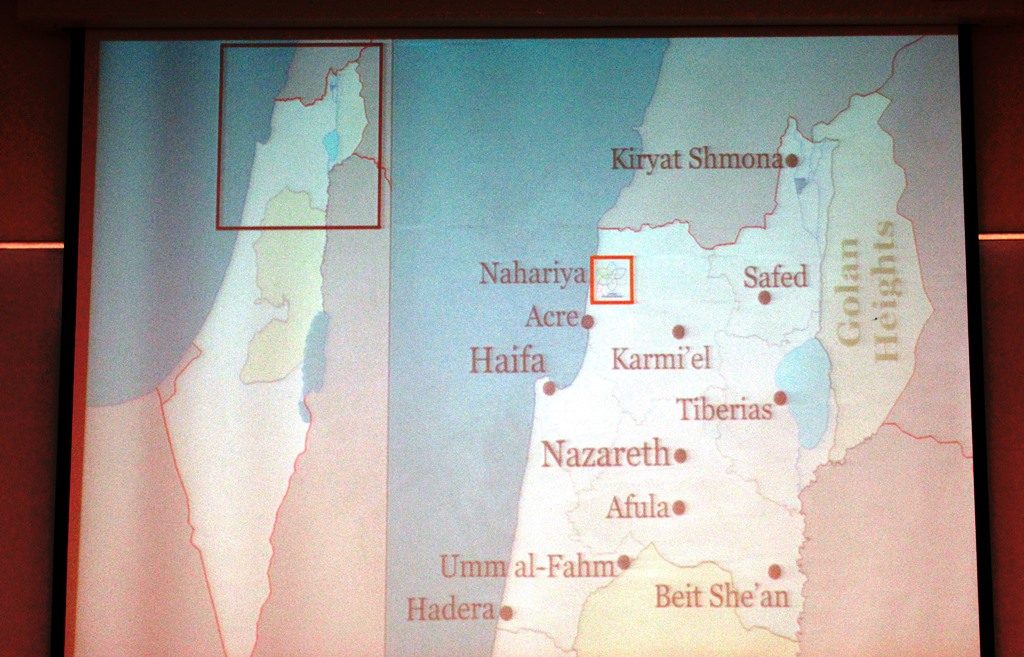
This map of northern Israel shows the Nahariya area where the GMC is located. More than 800 Katyushas were fired here during the Second Lebanon War, one hit and destroyed an entire department on the 4th floor of the hospital.
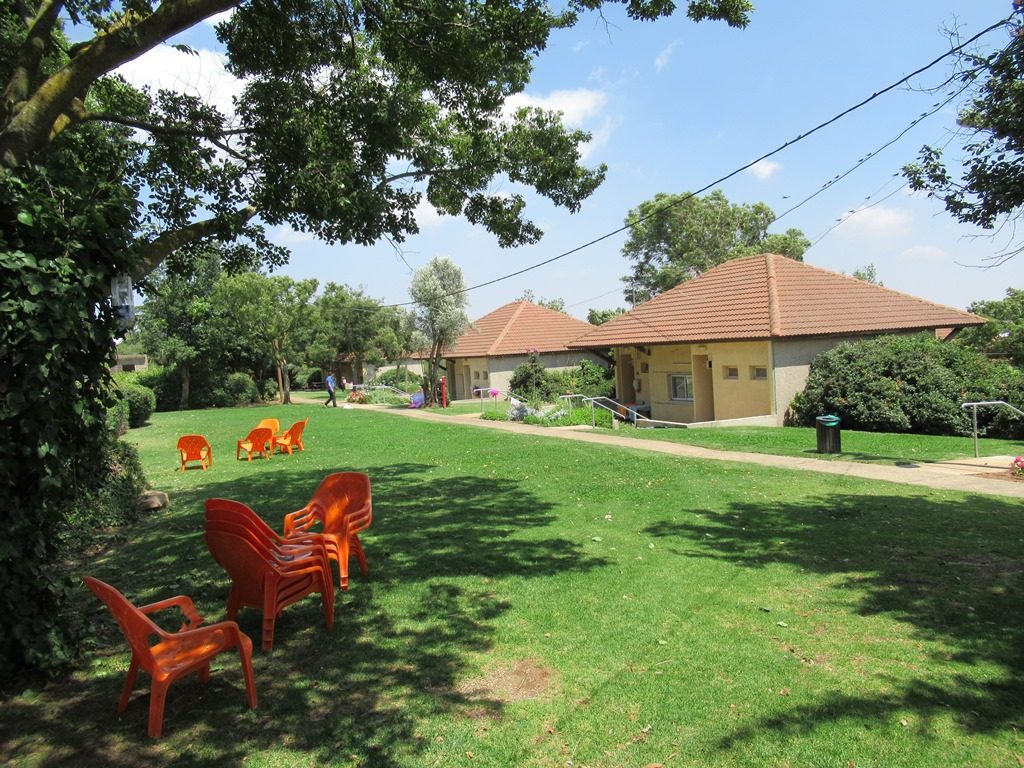
The northern border has been quiet for the last few years of the “Good Neighbor” policy.
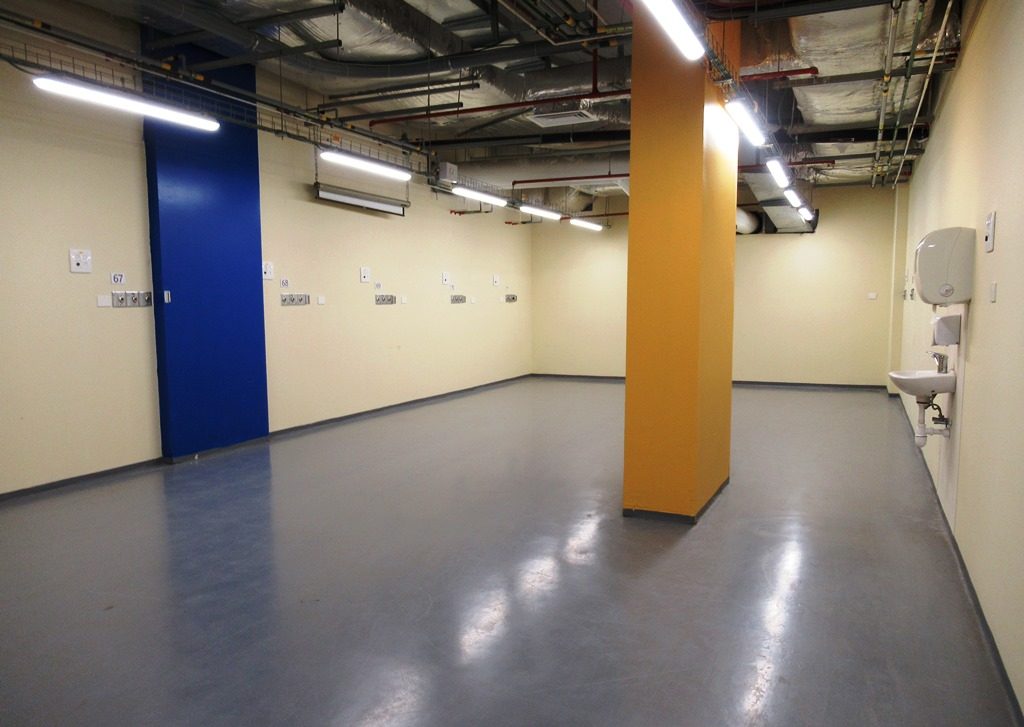
But the GMC Underground Hospital unit is ready if the need arises to evacuate patients again.

This Syrian patient, Hani from Ghutta, near Damascus, has been receiving treatment for two years. Currently there are 40 Syrians at GMC and more at other northern Israeli hospitals.

Jeeps are necessary to get to the Golan Heights vantage point, as a bus could not safely navigate the narrow and winding roads up the mountain.
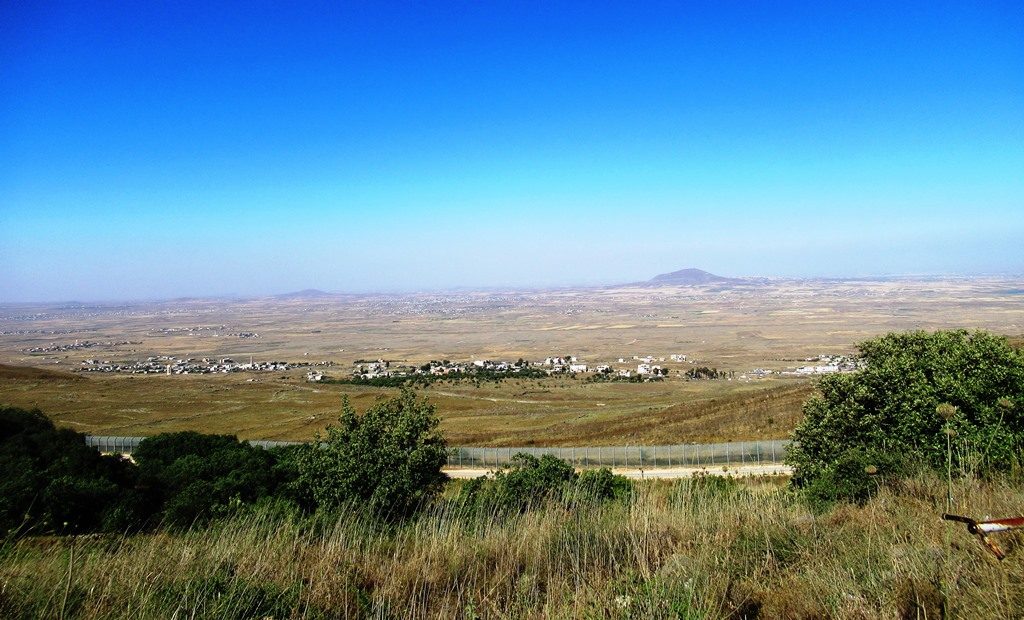
This is the view from the Bashan Hazaka observation point,
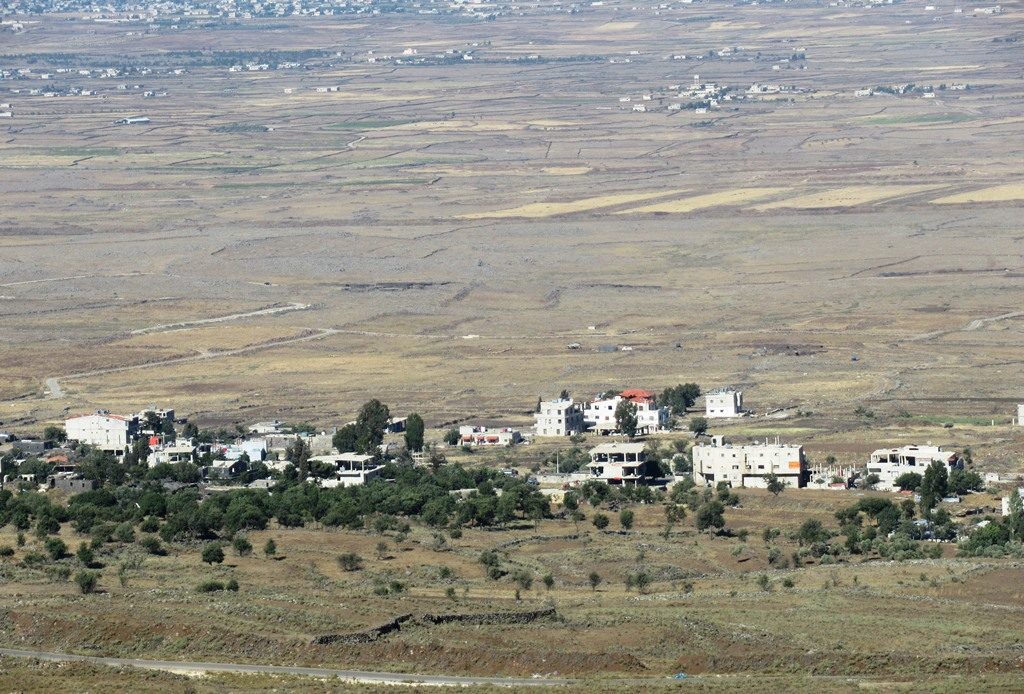
and a close up view of the area in southern Syria, near the Israeli border.
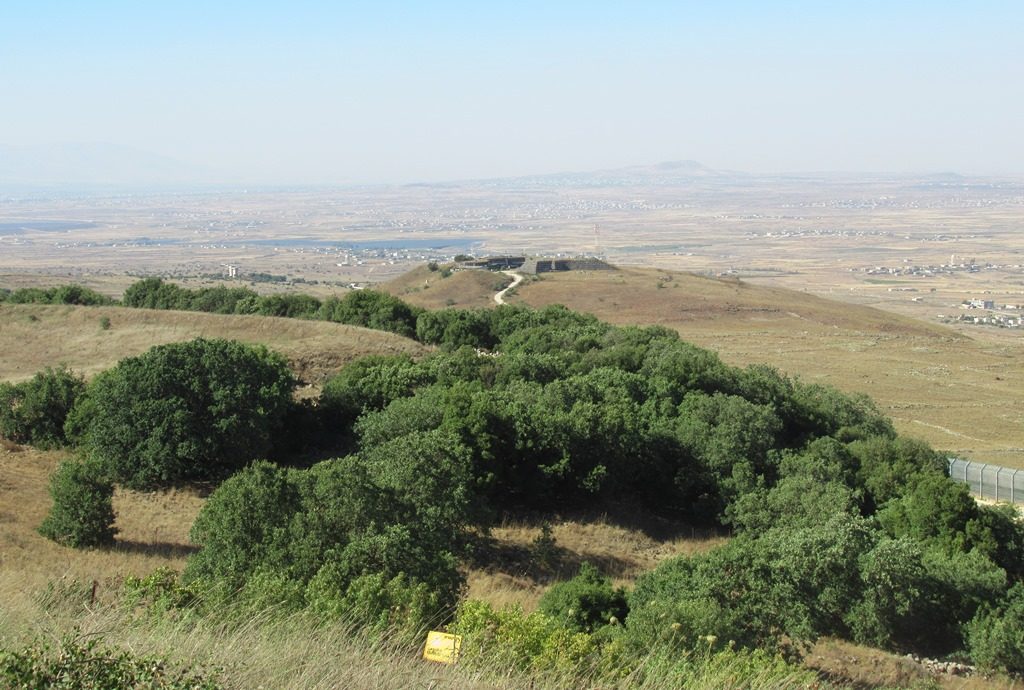
This is the view to the left, and at the bottom of the photo, there is a yellow sign warning of land mines.
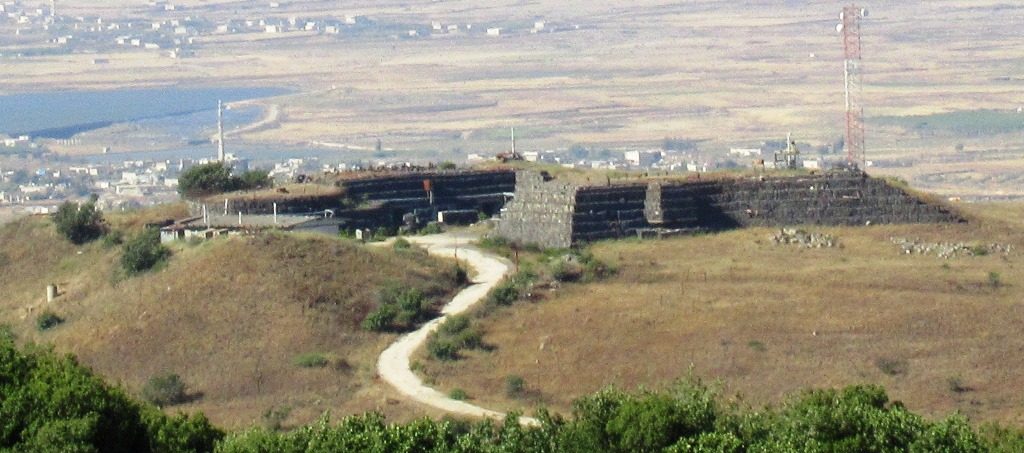
Here is a close up of the top of the hill that appears in the distance in the previous picture.
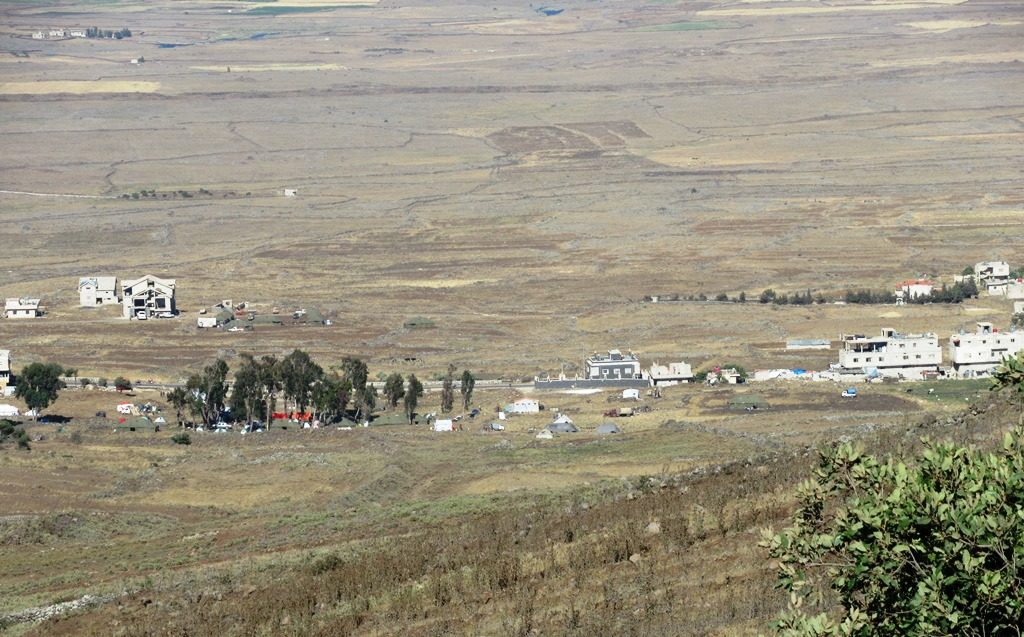
Look to the right, from the observation point and one sees a cluster of trees.
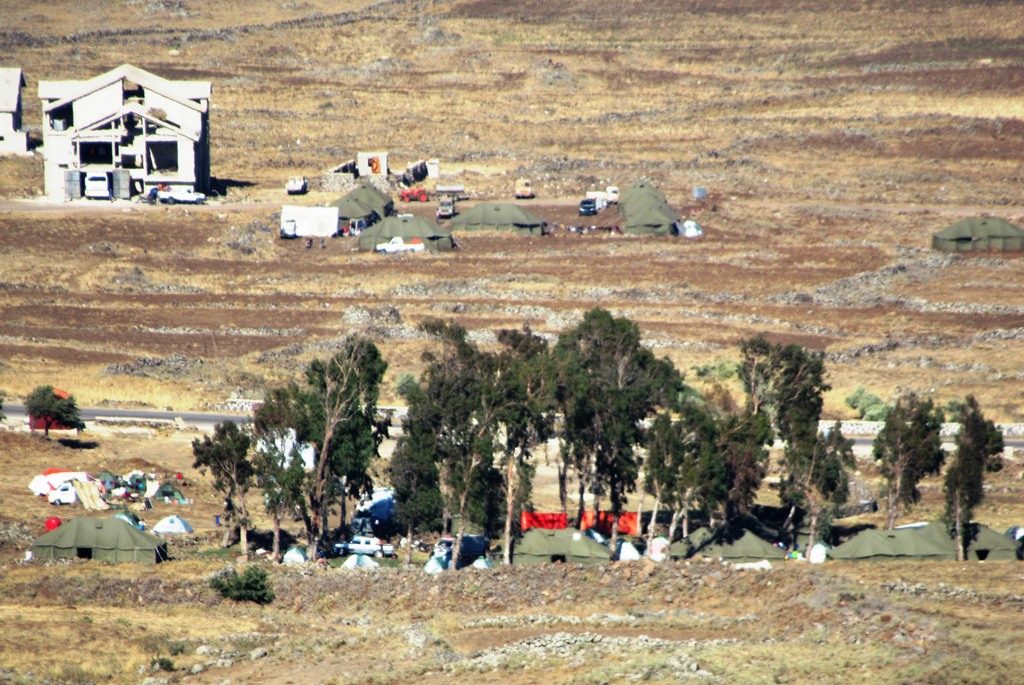
However, in a close up of the area, one sees the tents more clearly. These green IDF tents were supplied to homeless Syrians.
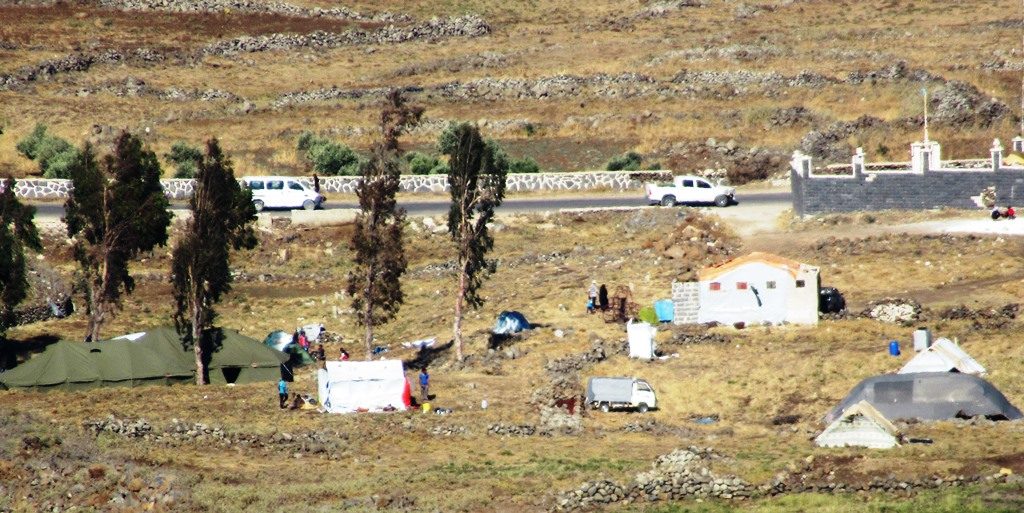
Displaced Syrian refugees have come to the border of Israel for their own safety.
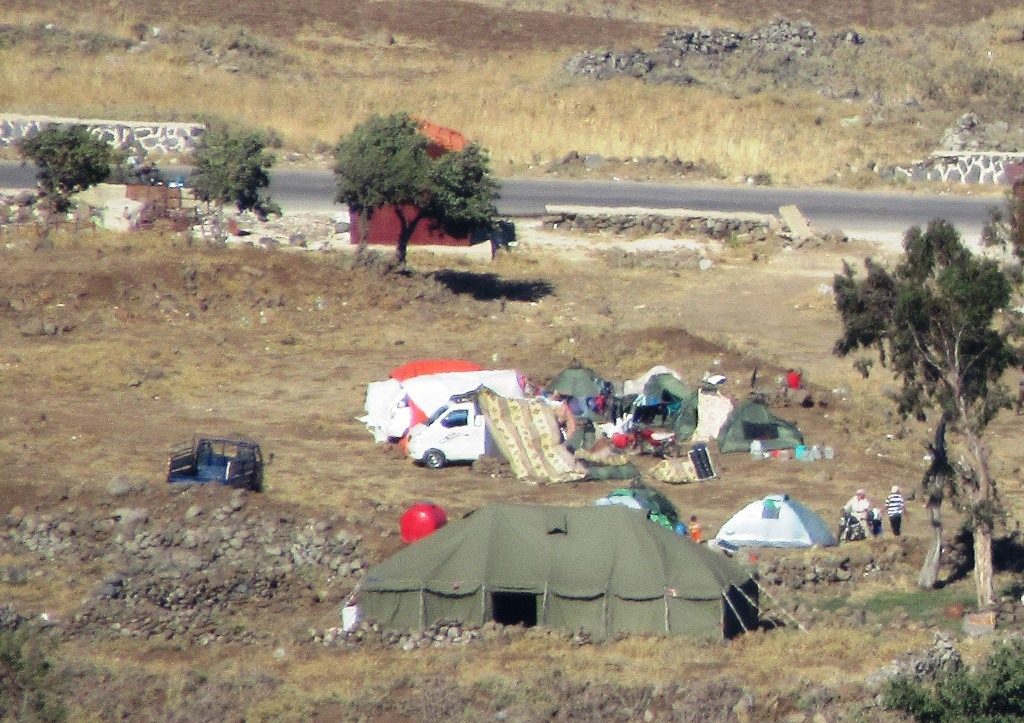
Bringing their families and whatever they can schlep, they are getting away from the Russians bombing from above and Assad’s forces, aided by Iran and Hezbollah, shooting to kill on the ground.
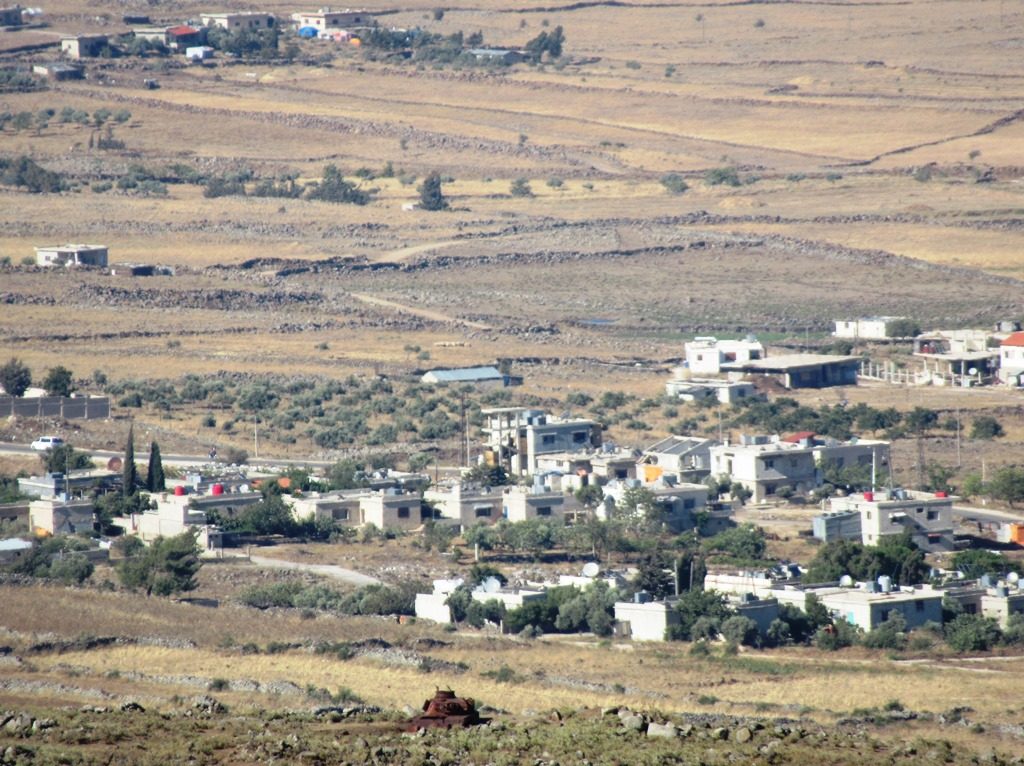
Reminders of the previous Israeli-Syrian wars are still around, as evidenced by the rusty tank in the bottom of this photo.
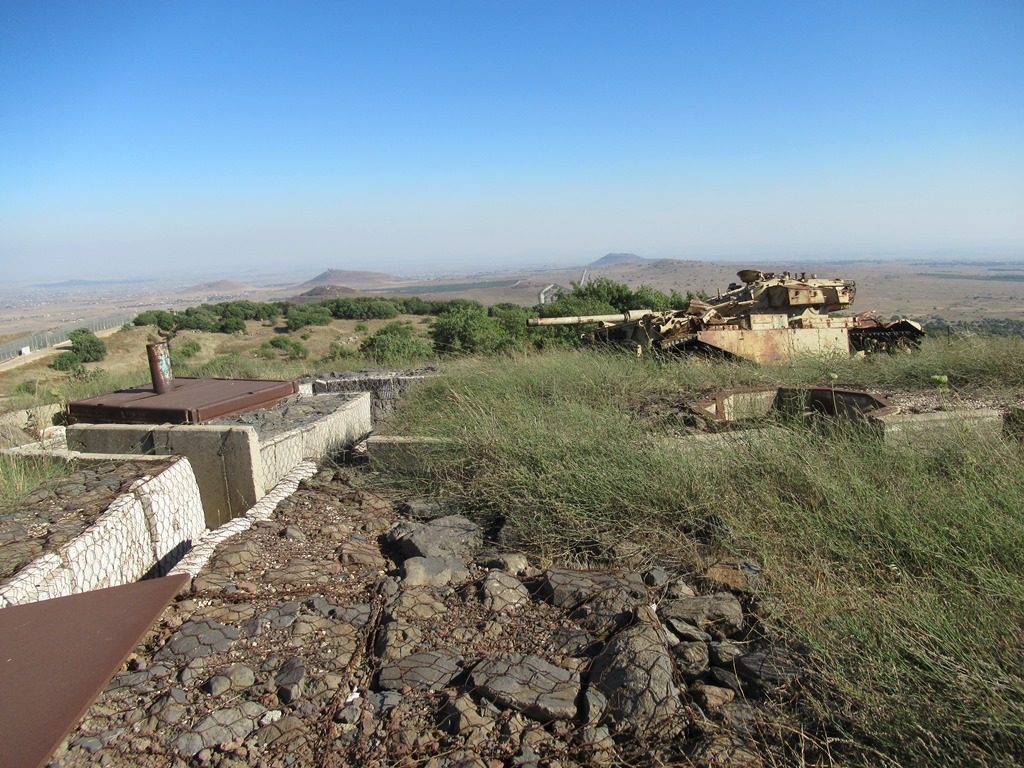
At the observation point on top of Bashan are remains of Syrian bunkers and old army vehicle.
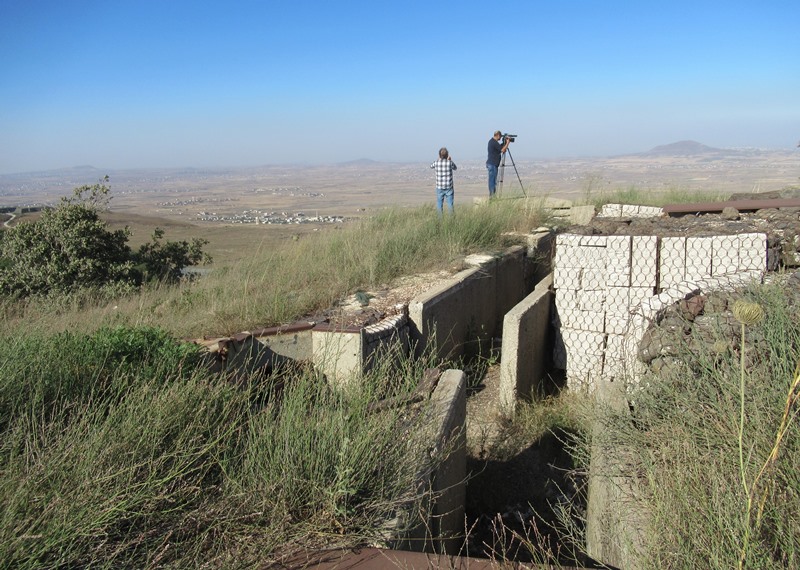
In the past the Syrians were here shooting down at Israelis over the Kinneret, the Sea of Galilee.
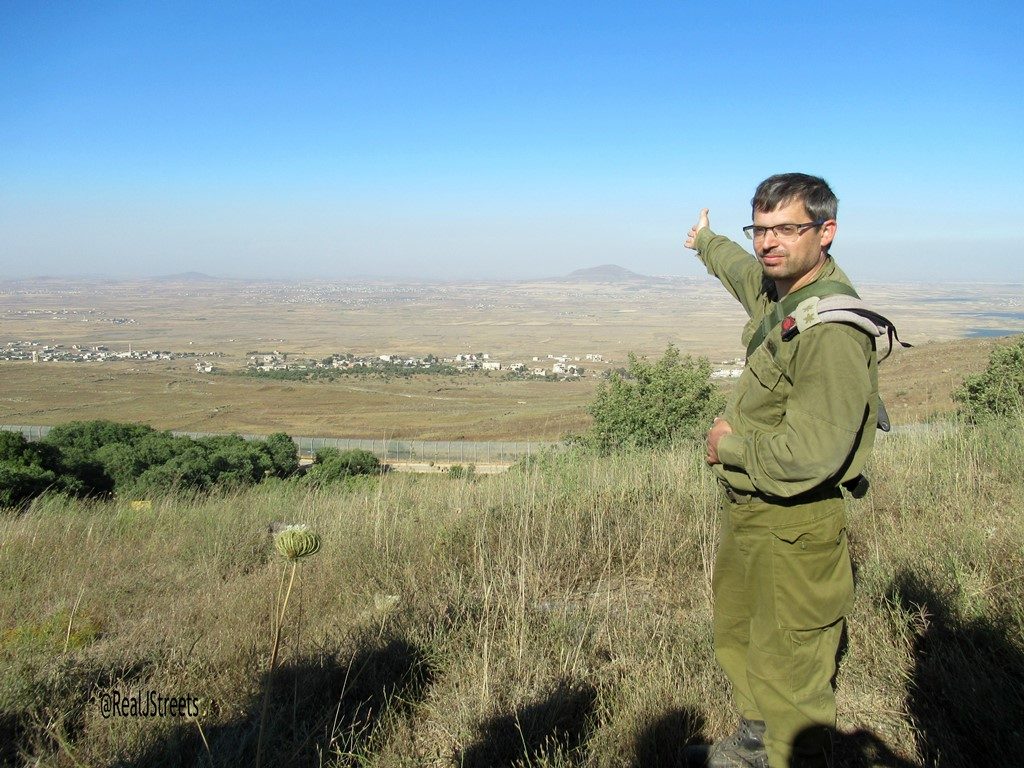
Lt. Colonel Dr. Tomer Koller, the medical officer of the Bashan Division in the Golan Heights, showed us the area where tens of thousands of Syrians are encamped. Those in need of medical treatment come there to find assistance.
How could anyone think it is a good idea to “give back” the Golan Heights to Syria?
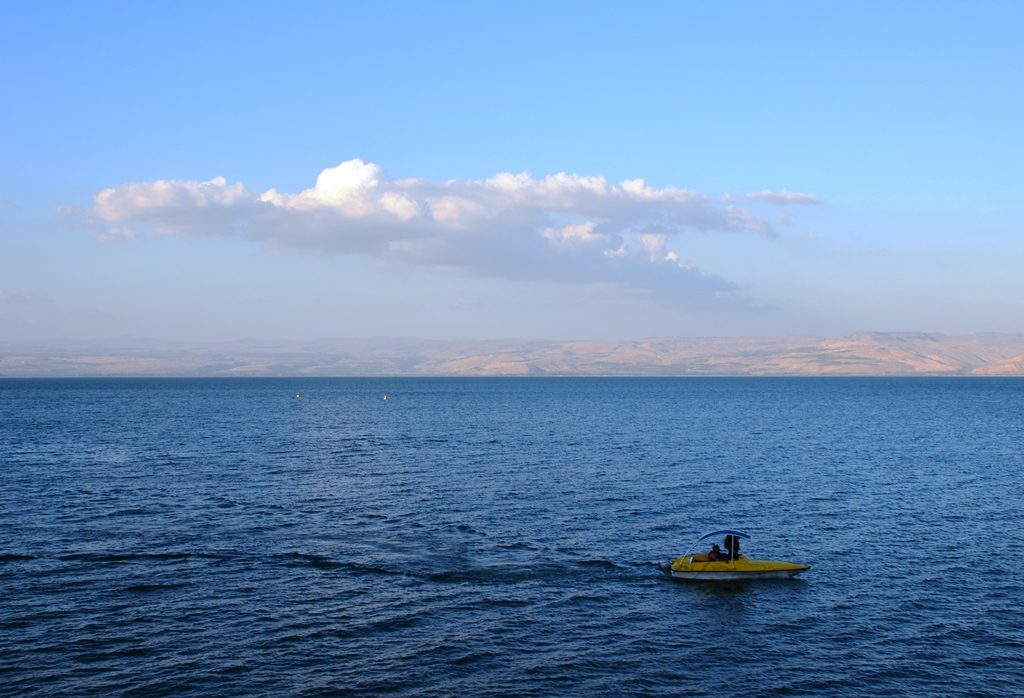
After many years, the Kinneret is again under threat from the intensified Syrian civil war.
The IDF Good Neighbor Operation has been helping.
Israeli residents in the north have gathered aid to send.
Mendi Safadi of the Safadi Center is working to open schools for the children displaced in Syria.
Frontier Alliance International (FAI) is working with IDF to get international doctors into Syria to help with the medical crisis.
Arab countries have shut their borders to Syria.
Where have the UN, EU, and human rights organizations been all these years?
Because of the growing humanitarian crisis, fleeing Syrians are flocking to the Israeli border.
Perhaps the next generation in Syria will not be taught to fear “blood thirsty Zionists.”